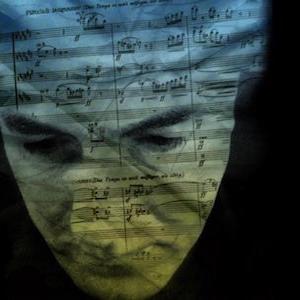Beyond Time and Space
 I began composing Beyond Time and Space in 2017 for the pianist ARUHI. Whilst composing it I knew that this would be the piece that I would dedicate to the memory of my life-long friend and mentor John Tavener. I first met John in 1977 when I began a four year course in composition at Trinity College of Music. I chose to study with Tavener because I saw in John a fellow quester, someone who was seeking some kind of enlightenment through via creativity. Although I never shared John’s religious convictions, we nevertheless shared a certain spiritual kinship in our questing. Mine veered more towards eastern philosophy and a more generalised spiritual awakening. Philosophies that John himself would also explore in his later music.
I began composing Beyond Time and Space in 2017 for the pianist ARUHI. Whilst composing it I knew that this would be the piece that I would dedicate to the memory of my life-long friend and mentor John Tavener. I first met John in 1977 when I began a four year course in composition at Trinity College of Music. I chose to study with Tavener because I saw in John a fellow quester, someone who was seeking some kind of enlightenment through via creativity. Although I never shared John’s religious convictions, we nevertheless shared a certain spiritual kinship in our questing. Mine veered more towards eastern philosophy and a more generalised spiritual awakening. Philosophies that John himself would also explore in his later music.
It was while composing Beyond Time and Space (originally titled ‘All things in time and space …’) that the idea came to me to record Palintropos with ARUHI as soloist. ARUHI welcomed the idea and rose to the challenge of learning the demanding piano part of Palintropos, and that is how this project came about.
Beyond Time and Space began life as a kind of traditional piano concerto, but shortly after starting it immediately took me down another path in which the piano represents the journey of a soul, or more specifically ‘consciousness’ – whether it is the collective consciousness of Jung, the consciousness of the ego, or a higher form of transcendental consciousness as in the final movement.
If consciousness exists outside the mind and body as some quantum physicists are beginning to suggest, then it leads to the possibility that consciousness is part of the very fabric of the universe. Beyond Time and Space explores that possibility via three separate and stylistically contrasting movements. The Outer Self (Star Child) represents consciousness as wave that exists throughout the universe and by implication that which is part of all of us. As Alan Watts once said “People often say ‘I came into the world’ – you didn’t, came out of it!”. The Inner Self represents our individual, ego driven, consciousness which often takes the form of our intellectual, logic based perception of universe. This movement is represented by the piano alone and in keeping with ‘ego’ has several parts that have been multi-tracked by the soloist. The Higher Self seeks to represent a more transcendental state of consciousness which rises above our ego centric consciousness. Hinting to the Sanskrit word ‘satchitananda’ which inn Hindu philosophy is compounded word consisting of ‘sat’ (being/true), ‘chit’ (consciousness) and ‘ananda’ (bliss) is therefore translated as “Being Consciousness Bliss” or “Truth Consciousness Bliss”. Akin with Palintropos, it could be seen as something that ‘turns back on itself’ and returns to itself albeit in a transcended state.
Michael Stewart

